Mountain bike grips are often easy to overlook, but as one of the few contact points on the bike, they’re important to both comfort and control. Singletracks has tested and reviewed dozens of pairs of grips, and we also surveyed more than 2,200 readers, asking them about their favorite grips, in order to determine which ones are the best.
We found the average price for the most popular grips is $26.48 USD (down about three dollars compared to eight years ago) and the average weight for a pair is 110g, also down. Grip length doesn’t vary all that much among our top ten–most are 135mm long–but it is possible to find grips that are slightly longer or shorter. The average grip diameter is 31.5mm, so riders with smaller or larger hands might choose a grip with a smaller or larger diameter for improved comfort.
| Grip | Weight* | Diameter** | Length | Price*** |
|---|---|---|---|---|
| DMR Brendog Deathgrip | 100g | 29.8mm or 31.3mm | 135mm | $28.95 |
| Ergon GE1 Evo | 119g | 32mm | 135mm | $34.95 |
| ESI Chunky | 60g | 32mm | 130mm | $19.99 |
| GPMTER | 104g | 30mm | 131mm | $6.98 |
| Lizard Skins Charger EVO | 90g claimed, 103g tested | 32mm | 136mm | $33.99 |
| ODI Rogue lock-on | 123g | 33.5mm | 135mm | $30.95 |
| Oury Lock-on | 200g | 33mm | 135mm | $33.99 |
| PNW Loam | 90g | 30mm or 34mm | 133.5mm | $26 |
| Trail One Farlow Gap | 128g | 30.5mm | 132mm | $27 |
| Wolf Tooth Karv | 75g | 32mm | 135mm | $21.95 |
The best grips for mountain biking

PNW Loam grips
Best overall grip for most types of riding
The PNW Loam grips are a favorite for their soft, 25a rubber that provides excellent grip and vibration damping. The underside of the grip feature good finger support while the mushroom-cap pattern on the inside, along with the minimal flange, keeps hands locked in position. This is our pick for riders who aren’t picky, and just want a grip that performs well for most types of riding. PNW Loam XL grips are also available, with a larger 34mm diameter at the same overall length as the regular version.
Pros: effective grip pattern; lightweight thanks to single lock-on design; soft compound damps vibration without feeling sticky.
Cons: soft compound wears out quickly.
Colors available: black, gray, orange, blue, light blue, brown, purple, green, forest green, yellow and red


Oury single clamp lock-on grips
Most durable grips
Oury grips have been a favorite among mountain bikers and moto riders alike for many years, thanks to their robust construction and firm rubber compound. These grips last a long time and feel great gloveless and for riders with larger hands.
Pros: tons of surface area for excellent grip with or without gloves; lots of rubber to damp trail vibrations; single lock-on clamp makes for quick and easy installation and removal.
Cons: heavy; large diameter not a good fit for smaller hands.
Colors available: black, gray, orange, blue, and red

ESI Chunky grips
Lightest silicone grips
In our last grip survey, Singletracks readers picked the ESI Chunky grips as their second favorite, and our product reviewers love them as well. These lightweight, silicone, slip-on grips are simple to use and install and are available in a variety of colors. The ESI Chunky grips are 32mm in diameter, so for those with smaller hands the ESI Racer’s Edge offer similar construction with a 30mm diameter. And if you want fatter grips, ESI Extra Chunky and Fatty’s grips are offered up to a 35mm diameter. There is a ribbed version too.
Pros: dead simple construction; lightweight for a silicon grip; available in additional diameters, either larger or smaller; good grip for riding with gloves.
Cons: tight fit makes slip-on installation challenging.
Colors available: purple, black, blue, light blue, green, gray, orange, pink, red, brown, white, yellow

ODI Rogue lock-on
Readers’ top grip choice
The ODI Rogue has been a favorite grip among mountain bikers for many years, and the v2.1 lock-on grip has been refined to near perfection. The tire-like pattern remains grippy in all conditions while the medium-hardness TPE material is designed to feel firm yet comfortable. With a single lock-on clamp, the ODI Rogue grips are easy to install.
Pros: rugged, meaty grip; good mix between firm and soft compound; iconic design and Singletracks readers’ top choice.
Cons: not a great fit for smaller hands; limited color choices.
Colors available: red, blue, gray, black
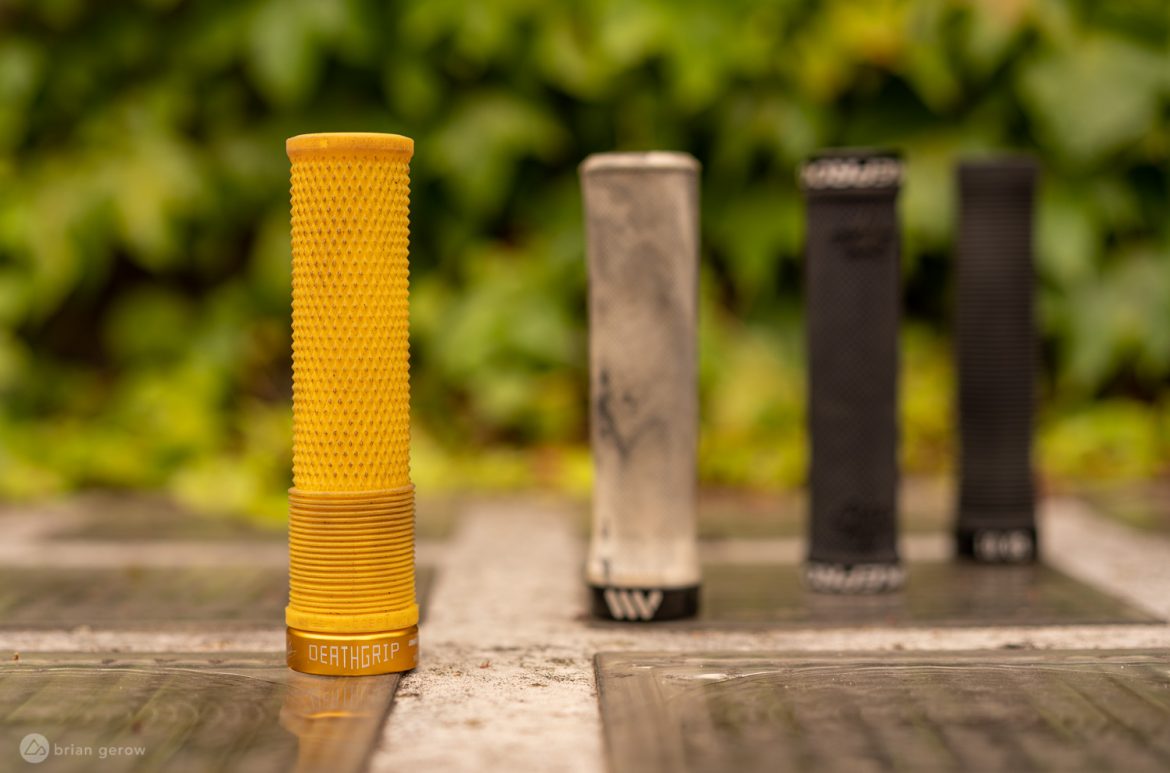

DMR Brendog Deathgrip
Grippiest grip and top athlete choice
The DMR Deathgrip was developed in conjunection with professional mountain biker Brendan Fairclough, and it’s one of the stickiest grips with a 20a version available. This single clamp features mushroom cap grip at the thumb and pointerfinger with a diamond pattern and finger bars underneath for the rest of the hand. Choose flanged or flangeless (shown), thin or thick, and with the 25a or 20a (stickiest) compound.
Pros: effective pattern; soft and grippy compound; many unique colors to choose from; available in two different diameters for better fit.
Cons: soft compound wears out quickly.
Available colors: purple, pink, red, black, light blue, dark blue, turquoise, white, orange, yellow, and gum plus various mixed colors/patterns.
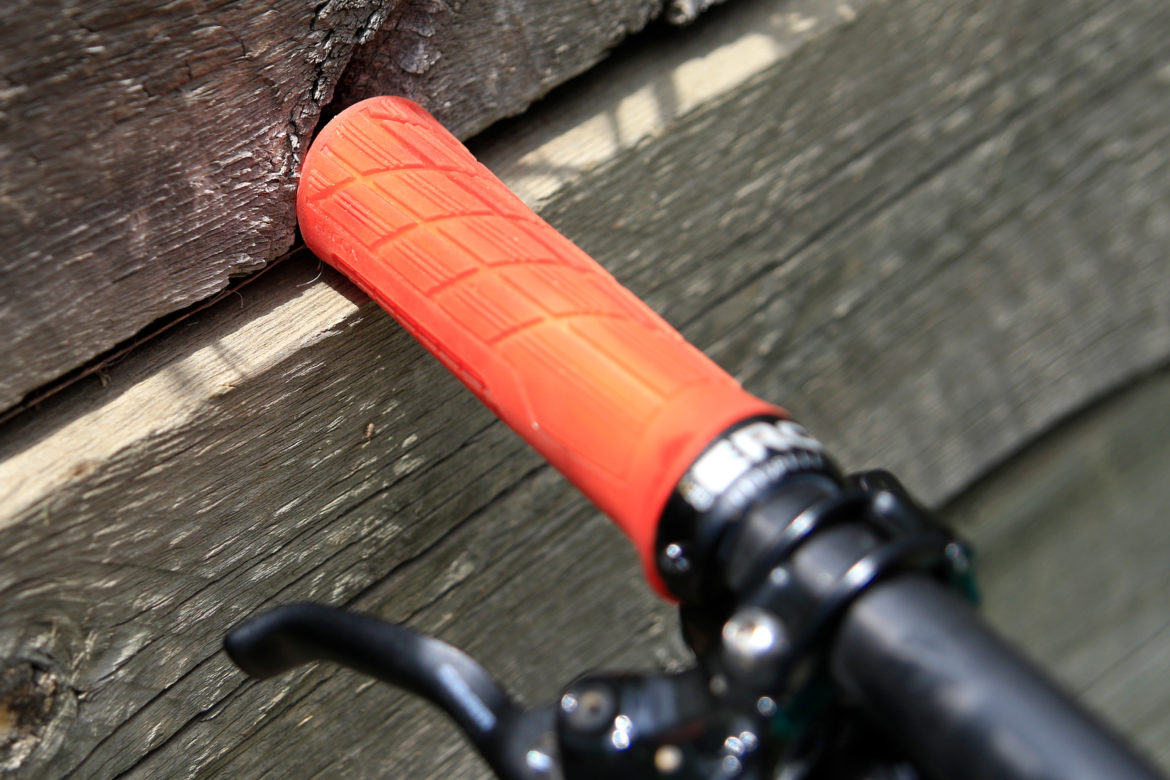
Ergon GE1 Evo
Most ergonomic grips
Ergon designs mountain bike grips for a variety of riding style, and they’re all meant to encourage a proper riding stance, in addition to offering comfort. The Ergon GE1 Evo lock-on grip is an enduro grip that places the rider in an aggressive position with arms wide and elbows bent. Thanks dual-compound construction, these grips offer a solid and connected bar feel.
Pros: ergonomic shape encourages proper grip; durable.
Cons: may be uncomfortable for some.
Available colors: blue, yellow, red, orange, black, brown, forest green.

GPMTER grips
Best value grip
When we tested a batch of inexpensive mountain bike grips available on Amazon.com, and among those, the GPMTER grips were our favorites. These look good and feel good with decent overall performance. They’re also worth a try if you have smaller hands, with a 30mm diameter.
Pros: inexpensive; comfortable with decent stickiness; single clamp design works as intended.
Cons: low quality end caps; small diameter not ideal for bigger hands.
Colors avilable: red or black

Lizard Skins Charger Evo
Best for small hands
The Lizard Skins Charger Evo grips feature a raised-diamond pattern on the top with a reinforced ribbed texture on the underside that grips well with gloves. Officially, the grips feature a 32mm diameter, but our calipers show they’re actually about 30mm. This makes it a good choice for adults with smaller hands and the single lock-on clamp makes for quick and easy installation.
Pros: complex pattern feels good and grips well; simple to install and remove.
Cons: thin padding means minimal vibration damping and quick wear.
Colors available: orange, red, blue, black, gray
Lizard Skins Charger Evo review


Trail One Farlow Gap grips
Best general purpose mountain bike grip
The Trail One Farlow Gap grips have a familiar look, blending many of the features of popular mountain bike grips like the DMR Deathgrips and Oury grips. These partially flanged grips feel great and grip well with or without gloves and feature a tacky 20a rubber. The 30.5mm diameter is perfect for smaller hands. Trail One Hell’s Gate grips feature the same overall design, but with a larger 32mm diameter.
Pros: grippy and comfortable bar feel; flange doesn’t get in the way of controls; sticky and soft rubber compound.
Cons: heavy for the size; softer rubber wears more quickly.
Colors available: purple, green, brown, red, black, orange, gray.
Trail One Hell’s Gate grips review

Wolf Tooth Karv
Best lightweight bike grip
These silicone foam grips aren’t the lightest grips available (see below) however they are our top pick for lightweight grips that perform great too. Wolf Tooth Karv grips are slip-on style grips and do a great job damping vibrations. However they aren’t super durable in the event of a snag or a crash. Size up or down to another diameter, from 30-40mm and also check out cam-shaped options for a more ergonomic fit.
Pros: lightweight and simple; good damping.
Cons: shows wear quickly.
Colors available: red, orange, yellow, green, blue, purple, black, brown, gray
Tips for choosing comfortable bike grips

Mountain bike grips are a seemingly simple item, one that many riders tend to overlook. But mountain bike grips serve three important functions that should not be overlooked:
- Provide a non-slip surface for handlebars
- Create a comfortable interface for the rider
- Protect bar ends
For riders experiencing issues with sore hands, or for those who are wondering what else is out there beyond stock grips, this guide will explain how to find the best mountain bike grips for you.
Grips are for gripping
Obviously grips are for gripping, ensuring that hands stay firmly attached to handlebars even when the bike gets wet from sweat or rain. Most grips utilize rubber or a rubber-like material, but grips with foam, leather, and even cork surfaces are available. Synthetic materials generally manage moisture by repelling it, while natural materials and foam grips tend to absorb moisture.

Rubber and rubber-like grips can offer varying degrees of stickiness or “softness,” which is not to be confused with padding. Softer rubber surfaces tend to grip better, even without gloves, but will wear out more quickly than a harder, less sticky rubber.
Some grips feature knobby patterns along the surface, while others are completely smooth. These patterns are designed with both no-slip performance and comfort in mind. While a bike grip that appears very knobby might seem to offer better no-slip performance, keep in mind that a smooth grip with sticky rubber might perform just as well.
Over time, all mountain bike grips tend to lose their gripping power as the surface is worn away. On bike grips with a pattern, it’s easy to spot smooth parts where the surface has been worn away. This offers a good indication of when it is time to replace the grip.
Stickiness also affects comfort because a less sticky handlebar grip requires the rider to squeeze it harder to maintain control, leading to more arm fatigue. If you’re experiencing numb arms or hands, it may be that you’re gripping the handlebars too tightly. A grippier, stickier grip could be the solution.
Padding
Gripping a bare mountain bike handlebar through rough singletrack would be painful indeed! Mountain bike grips are designed to provide padding and vibration damping to keep hands comfortable, even on extremely long or bumpy rides. Hand position is also a consideration in grip design: a good grip minimizes the potential for hand cramps.
Various levels of padding are available in mountain bike grips, and again, there are many different materials to choose from, each with their own unique properties. Padding should be firm and not overly squishy which can reduce control.

Bike grip diameters
Hands come in various shapes and sizes, and fortunately so do bike grips. Outer grip diameters range from about 28mm up to 35mm. Riders with larger hands should choose grips with a larger diameter, while riders with smaller hands should go with a smaller grip. If a grip is too large, it can lead to hand slippage and control issues. If a grip is too small, it could result in increased pain, particularly in the palm due to placing weight on a more concentrated surface area.
Bike grips for small hands
The Reverse Classic Thin lock-on grip is one of the smallest diameter grips (28mm) that will fit standard handlebars.
For kids and youth riders, smaller diameter grips are available, like the SDG Slater Jr which as a 25-26mm diameter. However, grips this size require a smaller diameter handlebar too, and won’t fit standard 22.2mm diameter adult bars. ProTaper Junit grips are available in 28mm and 23mm diameters, however they also require the use on a non-standard handlebar.
Retul Sports Scientist Jason Williams says there may be problems associated with a grip that is too small. “The risk in going smaller is that you make less surface area, and you make more potential for acute pressure points.” He goes on to note that a larger diameter grip allows you to distribute hand pressure over a wider area.
Bike grips for large hands
There are several large-diameter grips to choose for riders with big hands. Wolf Tooth offers 40mm diameter Mega Fat Paw grips and the ESI Fatty grips go up to 36mm.

Grip shape: round, ovalized, or ergonomic?
Round grips are the most common choice.
But not all mountain bike grips are perfectly round. In fact, many are tapered from left to right and/or around the circumference. An ovalized grip profile offers a balance between a full-on ergonomic grip and a perfectly round one. For riders who are experiencing discomfort in the hands or even shoulders, a specially-shaped mountain bike grip might be a good choice.
Ergonomic grips offer a flatter, wider surface on the outside of the grip and taper back to a more circular shape at the thumb. Adam Phaneuf, a bike fitter in Bellingham, WA, tells me, “an ergonomically shaped grip offers a greater surface area for hand contact, which has the potential for reducing pressure and the likelihood of pressure points occurring.” The flip side is, “ergonomic grips offer less freedom with hand position, so an individual who has a wide array of terrain selection may find them limiting in certain situations.”
Simon Schumacher is the Head of Ergonomics at Ergon, and he notes that while a round grip may offer the highest grip strength, an ergonomic shape tends to be a better fit for many riders. “When you look to your hand, it’s not flat, it’s a rounded or curved shape.” He notes that an ergonomic grip shape is helpful for those who are sensitive to nerve compression, and also to ensure riders use the correct arm and wrist position when riding. In other words, the right grip shape can improve your form and handling overall.
If you’re finding discomfort with your grips, an ergonomic shape might help. However, Williams of Retul notes it’s just as likely you might have an issue with your bike fit that’s contributing to hand or wrist pain. Consider your glove selection as well, though none of the experts I spoke with recommended gel-padded gloves.
Mountain bike grip types: lock-on and slip-on
There are two basic ways bike grips can be attached to a set of handlebars: friction or lock rings. Friction grips, aka slip-on and slide-on grips, are simply slid (or more often, forced) onto the bars and are held in place by friction between the inside of the grip and the handlebar. These grips are never fully secured, and therefore can rotate in wet conditions or when the rider places a lot of torque on them.
Lock-on grips are very popular with mountain bikers because they eliminate the twisting associated with friction grips. The grips are secured to the bars with either a single clamp on one end of the grip or more often, clamps on both ends of the grips. A bolt is used to tighten and release the clamp, generally making them easier to install and remove than friction grips.

Grip length
Mountain bike grips are available in various lengths as well. Riders won’t find a big variation in lengths: most grips fall between 130mm and 140mm in length, measured from end to end and including the clamp(s). However, shorter 90mm grips are designed to work with grip shift systems. Riders with smaller hands simply leave more of the grip unused, though if bar space is at a premium a shorter grip may be in order.
If you like having multiple hand positions on the bike, a longer grip could be beneficial, though keep in mind you’ll still need to be able to reach your controls. ESI XXL grips are the longest bike grips we’ve found, measuring 210mm across!
Aside from grip and comfort, grips also serve to protect handlebar ends. Bikes are constantly being laid down on their sides, and close calls with trees and rocks can grind away at bar ends. Look for grips with thick, solid end caps to protect bars, especially carbon bars which are particularly susceptible to damage.

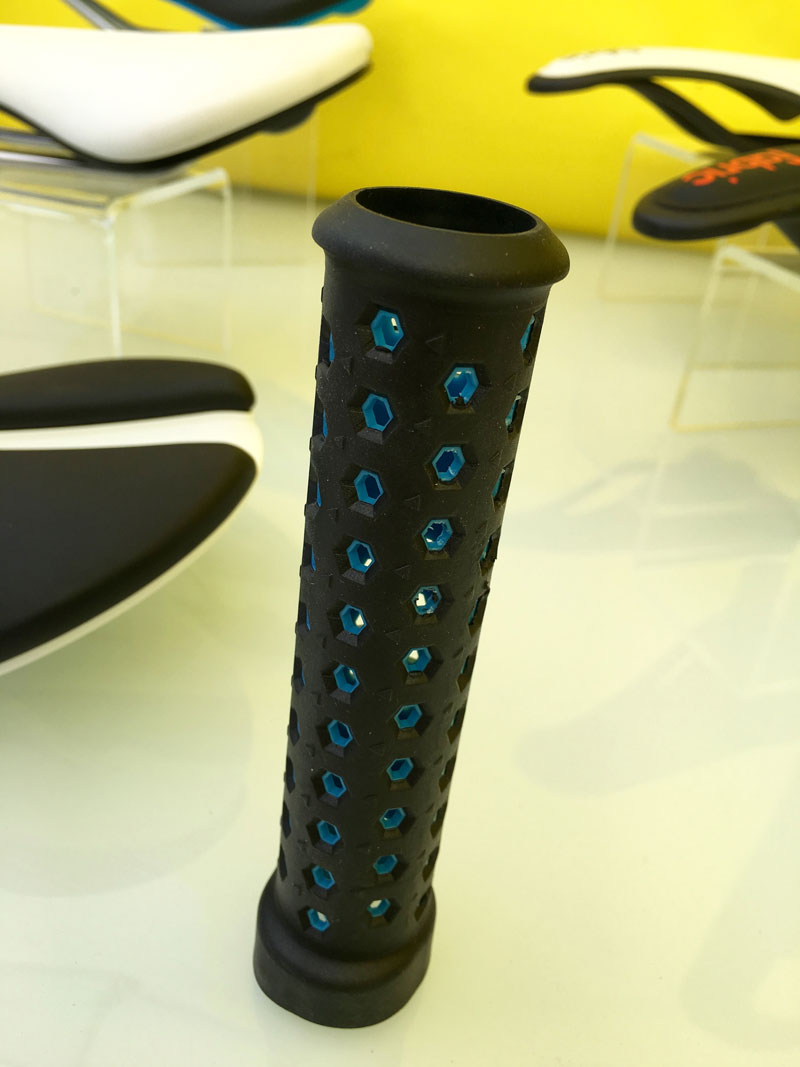
Average grip weights and the lightest MTB grips
Grip weights can vary pretty wildly, depending on the amount of padding, clamp configuration, and the ergonomic profile. The lightest grips are generally slip-on foam grips, while lock-on ergonomic grips can add significant weight. At 18g per pair, the foam All Mountain Style Extralight grips (shown above, left) are claimed to be the lightest available for mountain biking, and we haven’t been able to find a lighter pair. The Fabric Slim Grips (above right, about $20 at Amazon) are possibly the lightest lock-on grips available, weighing just 68g for the pair thanks to weight-saving cutouts.
Among the grips we recommend, the weights range from 60g to 200g for a pair, with the average weight for a pair of mountain bike grips falling around 110g.
Pricing for mountain bike grips generally falls in a pretty tight range, with inexpensive grips available for less than $10 for a pair and ergonomic grips selling for $60 or more.
Customize your bike look
Finally, mountain bike grips should not be overlooked as an avenue for making a statement. Most companies offer several color choices for their most popular grips, and various clamp finishes, surface patterns, and profiles make it possible to truly customize a bike build.
Mountain bike grips serve three important functions: control, comfort, and protection. With dozens of designs on the market today, it’s easy to find a quality mountain bike grip that does all three for a reasonable price.

Suspension grips
All bike grips are designed to damp vibration to some degree, and suspension grips like Revgrips, add elastomers to provide additional shock absorption. Based on our tests, the grips do work to smooth trail chatter, and it’s possible to adjust the firmness to get just the right bar feel.

How to install and remove handlebar grips
Installing lock-on grips is fairly straightforward: loosen the clamp bolt(s), slide them in place, and tighten the bolt(s). It’s important to get the bolt tight enough that the grips won’t slide or twist, but not so tight that you damage your handlebars. This is especially important with carbon handlebars. Check the specs for your bars, and the grips, for the maximum amount of torque recommended, and use a torque wrench to be sure. For example, the PNW Loam carbon bars specify 6Nm of torque for grips and other handlebar controls.
The outer end of the grips should be flush with the ends of the bars to ensure they are fully supported, and to ensure proper hand placement. Install bar plugs on two-sided, lock-on grips to prevent injury and to protect your bar ends.
Slip-on grips (also known as slide-on grips) are a bit more difficult to install, though the process is also straightforward. Some mechanics like to apply hairspray to the bars before installing to ensure a grip that won’t slip. Grips should have a tight fit, which is what makes them hard to install. Wipe some isopropyl alcohol on the bars to help the grips slide more easily. Don’t try to lubricate the bars or the inside of the grip to make it easier, as this will cause the grips to slip while riding. A blast of compressed air can help slide grips into place.

When it’s time to replace a pair of grips, some can be difficult to remove. Here again, compressed air is very effective if you’re unable to simply twist and pull them off. In the worst case you might have to cut the grips off. To remove lock-on grips, simply loosen the clamp bolt(s). Still stuck? Read our detailed tips and tricks for removing stuck grips.
How much should I pay for a good pair of MTB grips?
Our favorite bike grips range in price from about $7 to $34 for a pair, for an average price of $26.48. Ergonomic and suspension grips can cost up to $90. Grips are an inexpensive upgrade to begin with, and we’ve found there really isn’t an advantage to spending more than $35. Even the budget Amazon bike grips we tested, some as low as $5, proved perfectly acceptable.
Do you have more questions about mountain bike grips? Hit us up in the comments!















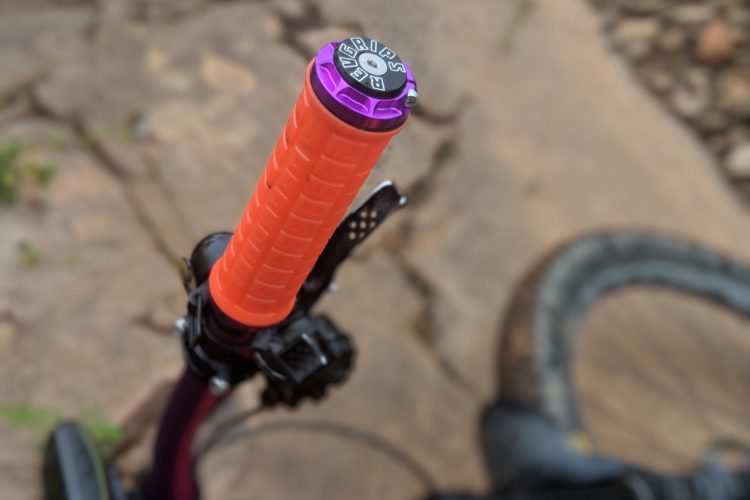
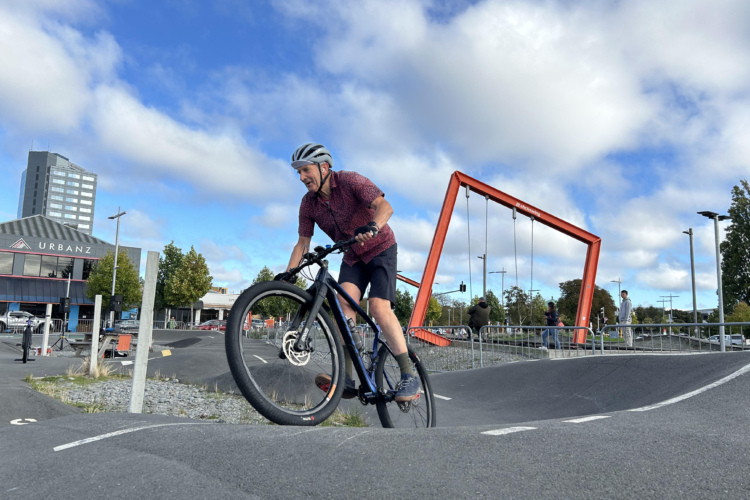
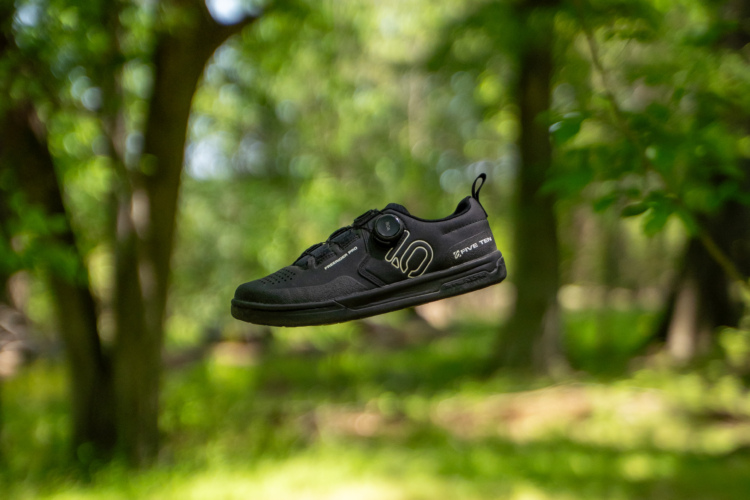
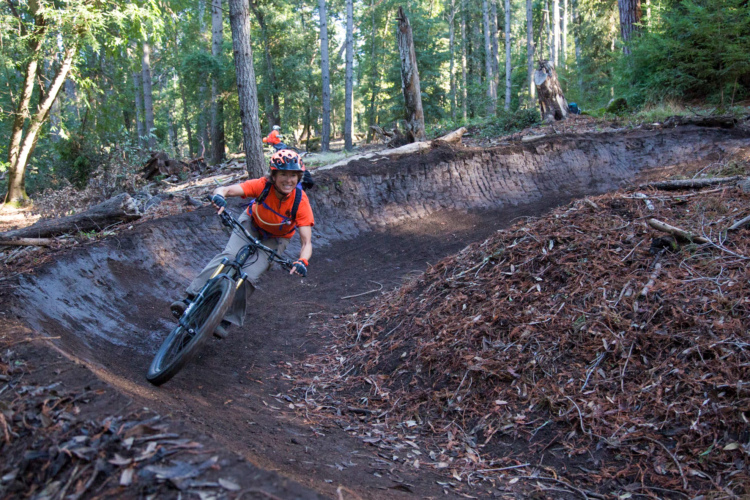


12 Comments
Jan 5, 2018
Nov 3, 2016
Nov 1, 2017
https://revgrips.com/
Nov 1, 2017
Jan 3, 2018
One thing i learnt recently is that hard grips can be more comfortable than soft grips regarding arm pump (pins and needles in the forearms and hands). Soft grips tend to encourage the rider to squeeze harder whereas harder grips allow the rider to use a more relaxed hold.
Jan 3, 2018
Nov 3, 2016
Nov 3, 2016
Sep 15, 2024
Sep 16, 2024
Jan 3, 2018
Can anyone recommend something like the Pivot grips? I have small hands, so the thick Rogue's and Oury's are out, but the really thin ones like Ruffians are just so uncomfortable. The Pivot grips seemed to bridge the gap pretty well. Oh, and also love the single clamp design, so wouldn't want any double clamp.
I got some Ergon GD-1's that I'm riding now, but so far I'm not too impressed. Also remembered I hated bar plugs (I don't know how I'm ever going to get these out of my bars when the time comes).
I'm eyeing the Deity Knuckle Dusters, but they might be too thick.
Nov 12, 2016